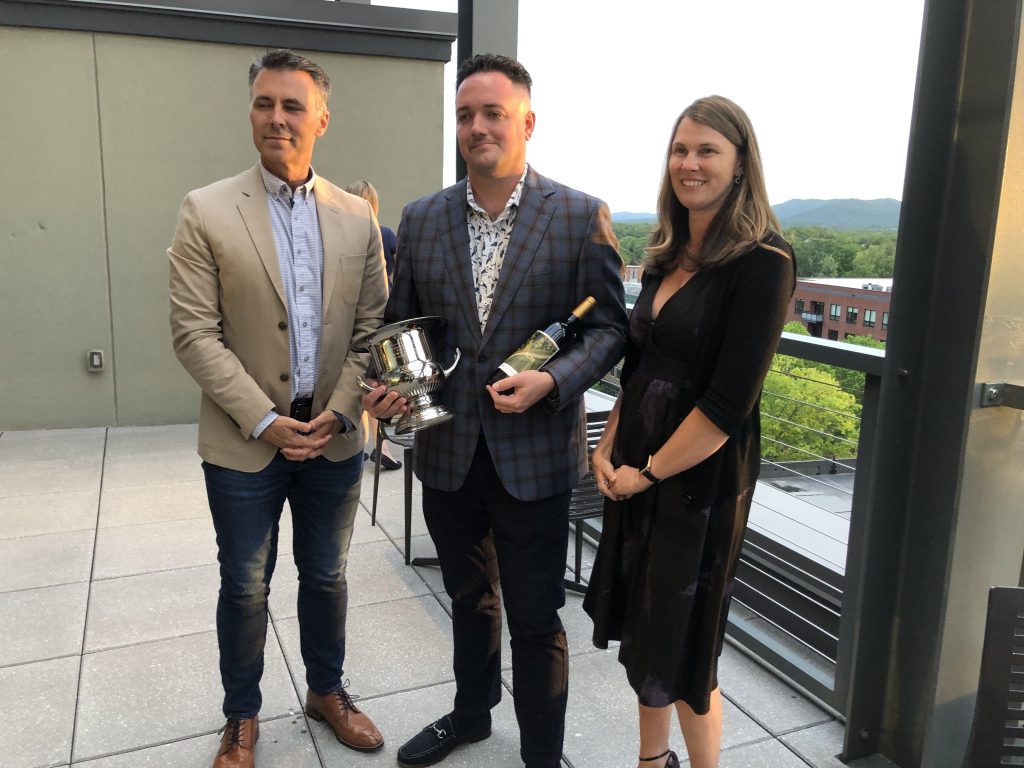
The 2023 Monticello Cup Competition awards ceremony, organized by Frank Morgan for the Monticello Wine Trail, was held May 2nd at the new 323 building on Second St. SE in Charlottesville’s Downtown area on the tenth floor, with a panoramic view of the town and the mountains to the west.
Some fifty wines were entered in the competition, with the seventeen gold medal winners poured at the awards reception; only three were white, and two of them were varietal Petit Mansengs (the other was a Sauvignon Blanc). The red wines were all from the recent, strong vintages of 2017 (dark black fruits), 2019 (fruit-forward, juicy red fruits) and 2021 (concentrated black fruits and tannins), except for Barboursville’s flagship “Octagon” Meritage-style blend from 2016.
freshness on the finish.
Notes on the White Wines
The two Petit Mansengs that won gold medals showed how this obscure grape from the Jurancon region in France has moved from the margins in Virginia to being a varietal white star. The 2021 by Hazy Mountain had solid fruit but was fermented in neutral oak; the large fruit was mellowed by neutral oak and lees contact, but still had punchy acidity on the finish. By contrast, the Michael Shaps 2019 version was rich and unctuous, like a dry Sauternes, but with depth, dimension and
The Chiswell Farms Sauvignon Blanc 2021 was a nice fresh, bright change of pace, with very grassy varietal notes, but mellow and smooth on the palate and a dry, refreshing finish.
Three Great Vintages and Their Styles
The gold medal red wines were dominated by two types: Meritage-style blends, and varietal Petit Verdot; the only other type was one varietal Cabernet Franc from Flying Fox Vineyard (owned by Veritas Vineyards). With four vintages and an impressive range of styles, it was rewarding to compare all the Meritage-style blends and also the varietal Petit Verdot wines. In both cases, there were wines of finesse and grace, wines drinking well now, and wines (mostly from 2021) that you could feel but not really taste, that would be worth laying down and waiting for. The 2017 vintage has hit its stride at five years, as has the 2019 vintage (which is fruit-forward and more accessible), while the tannic 2021 will need at least three more years to open up.
Tasting the Cup-Winning Wild Acre Reserve 2017
As I wrote last December (https://www.richardleahy.com/2022/12/09/wine-of-the-week-pippin-hill-farm-vineyard-wild-acre-reserve-blend-monticello-va-2017/), this debut high-end reserve red blend for Pippin Hill is something special. Made of 60% estate-grown Tannat and Cabernet Franc, the nose is of ripe black fruits and clean earth with dried cherries. The palate is all about texture, like drinking dark purple velvet! Tannins are very smooth and the fruit is ripe, but it still needs a few years for the fruit to flesh out to match the structure.

